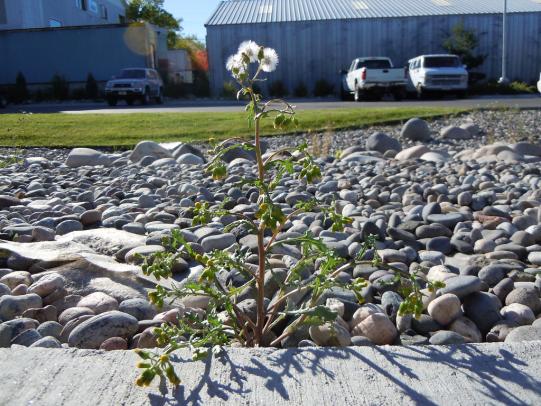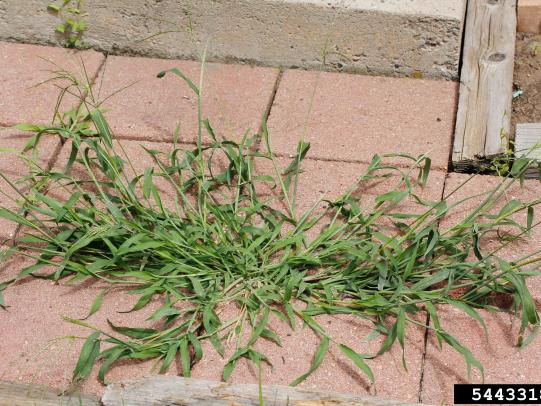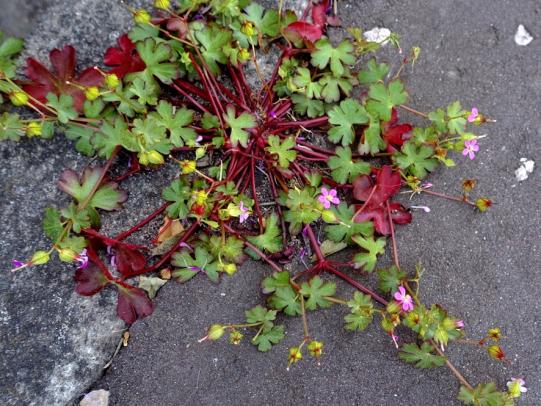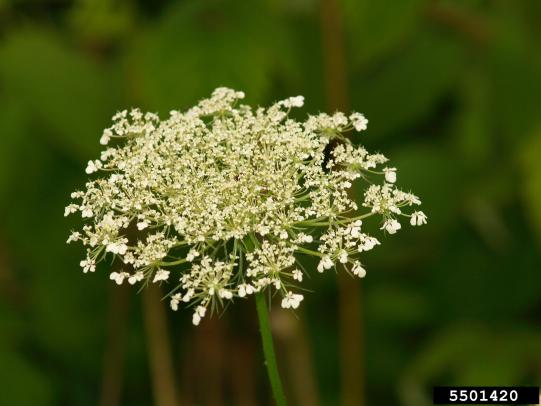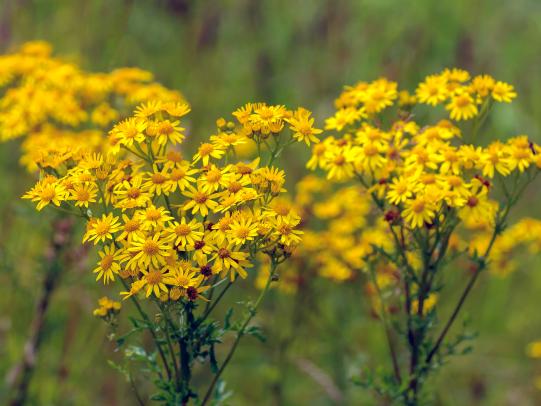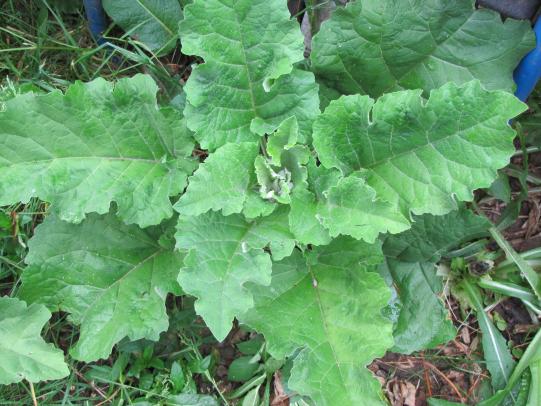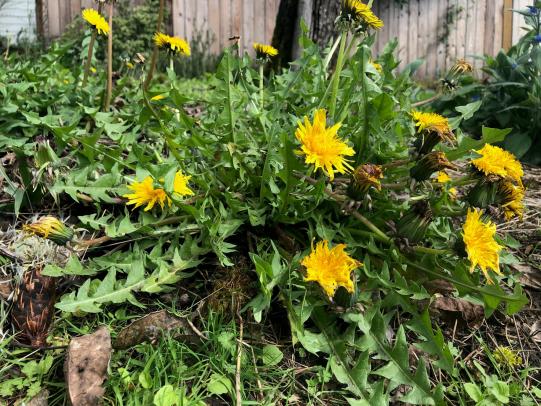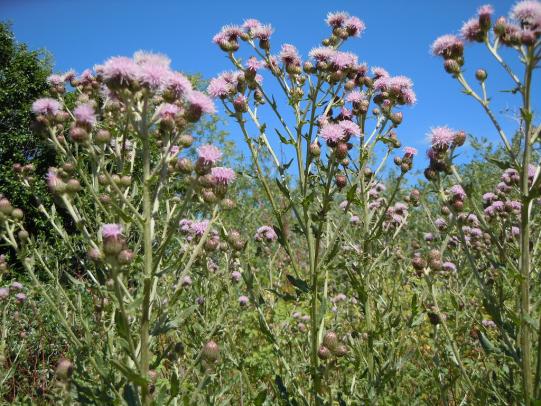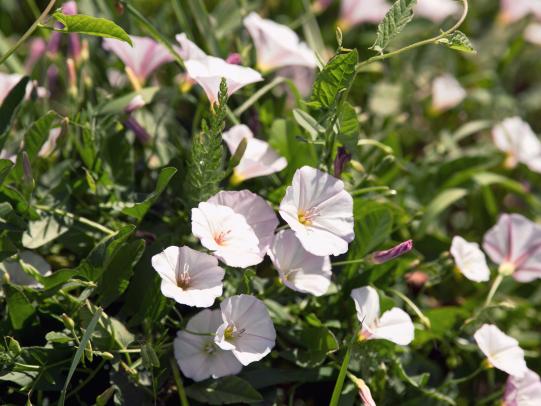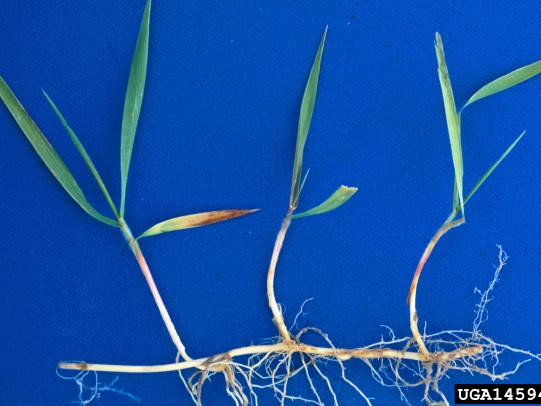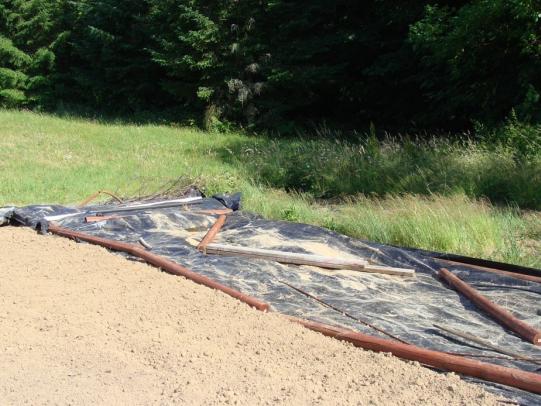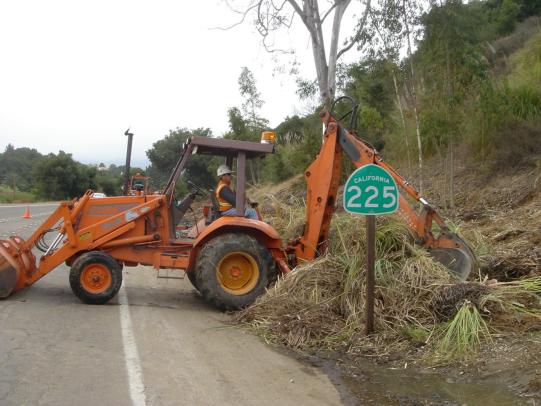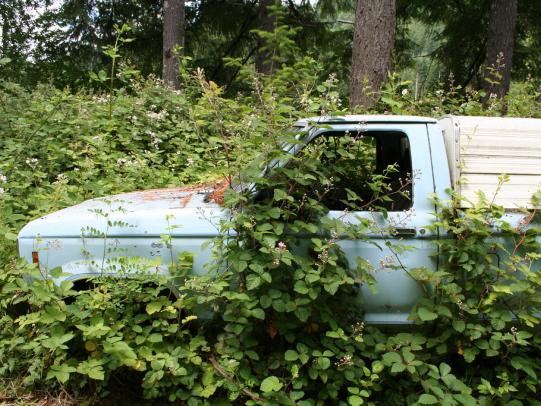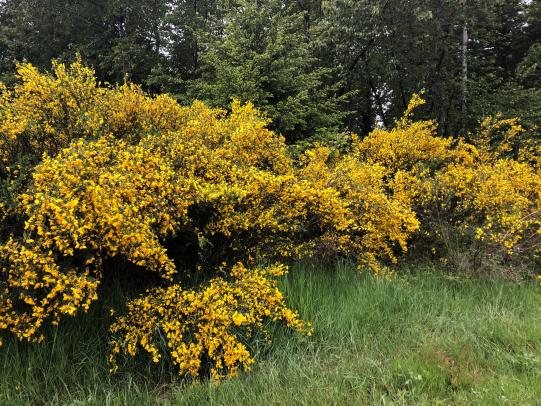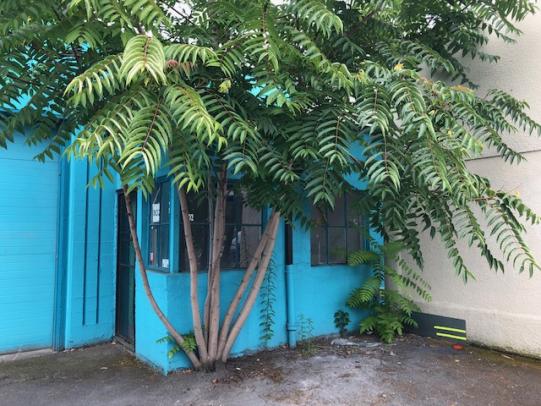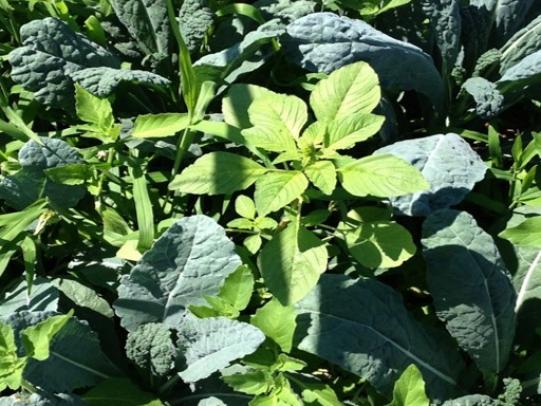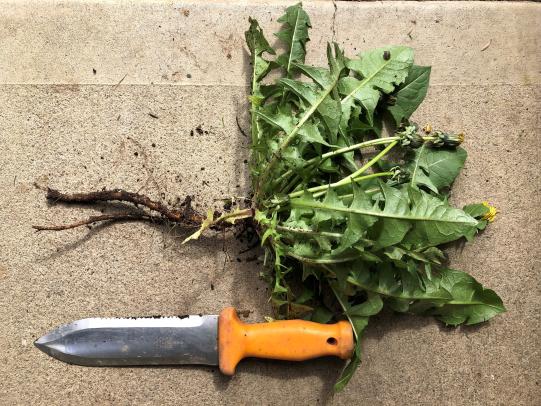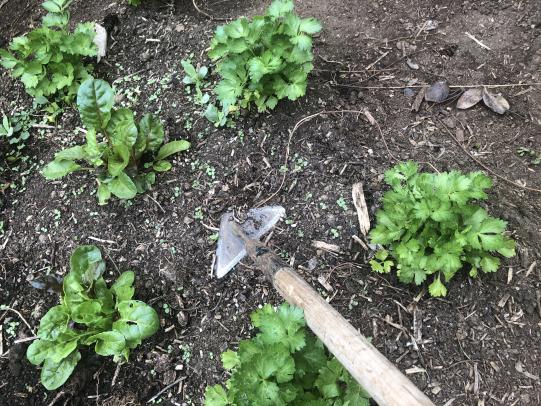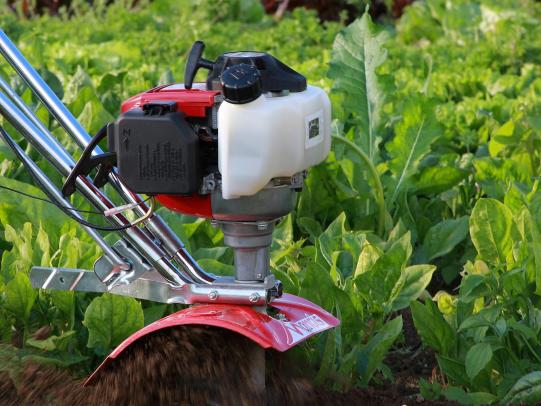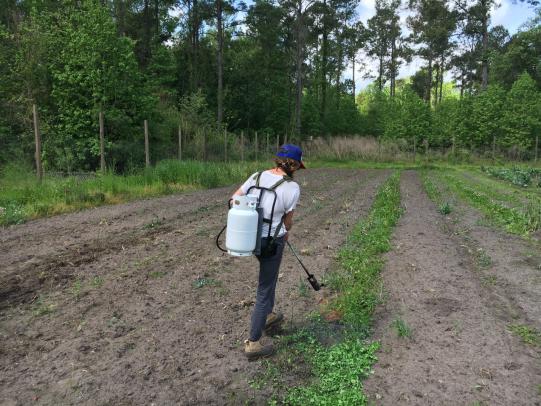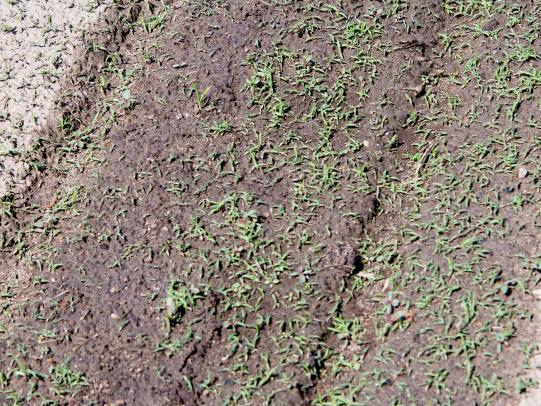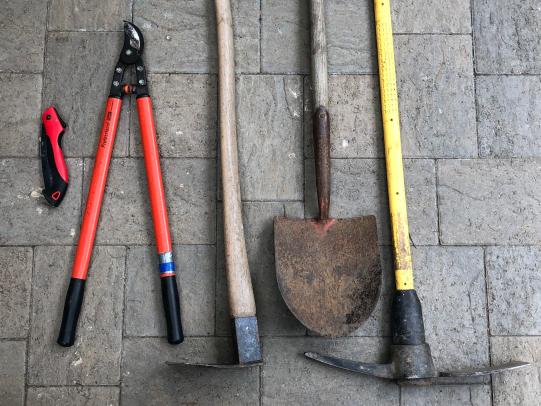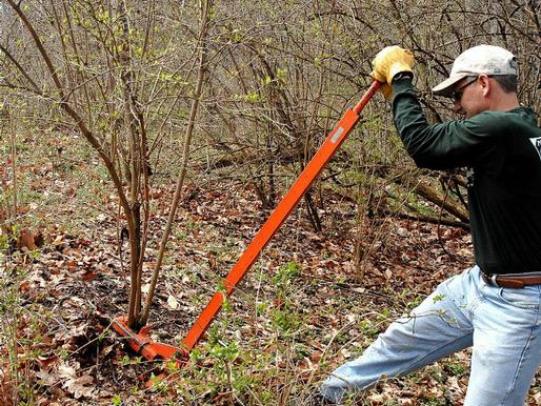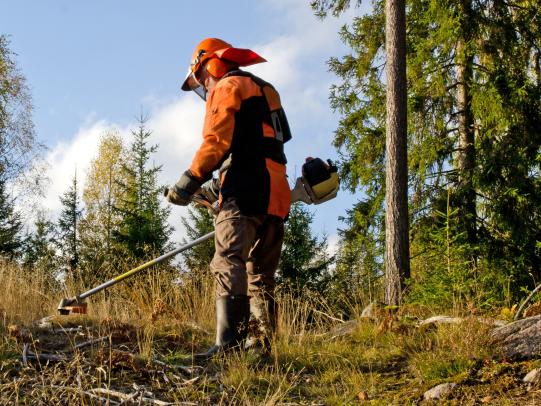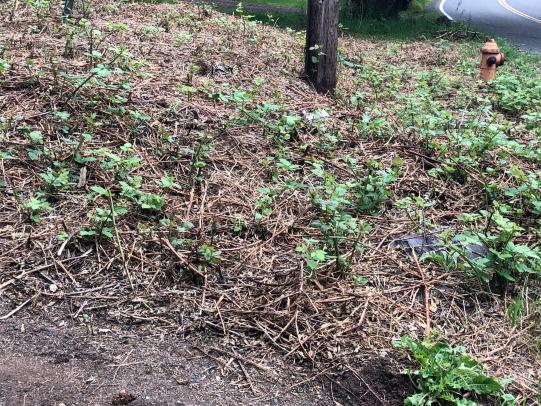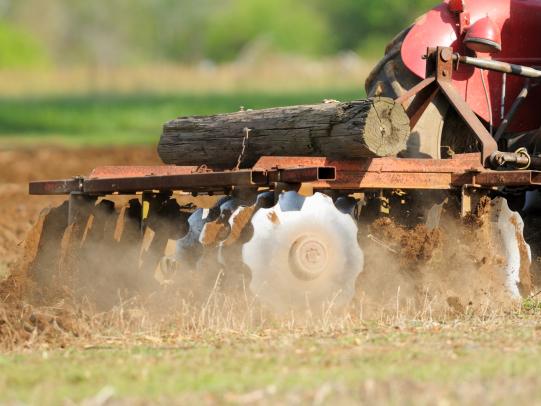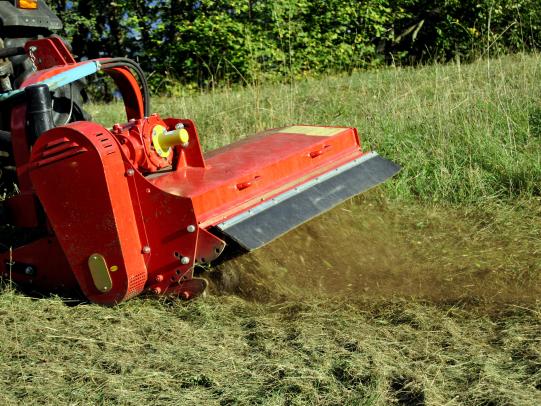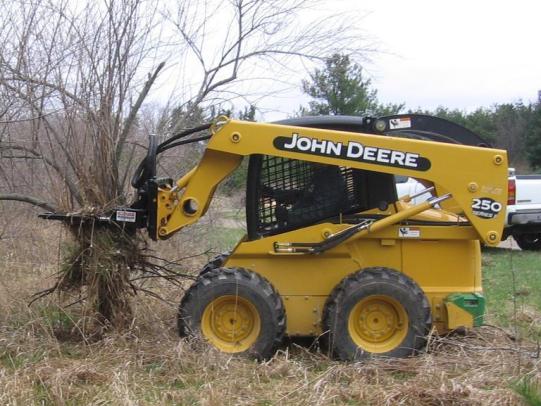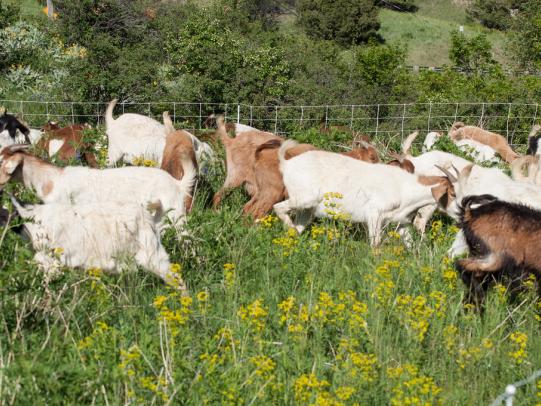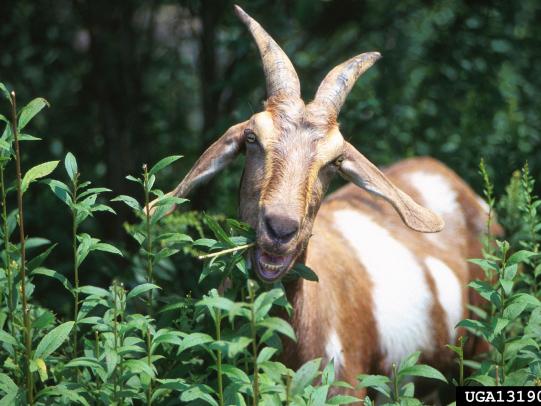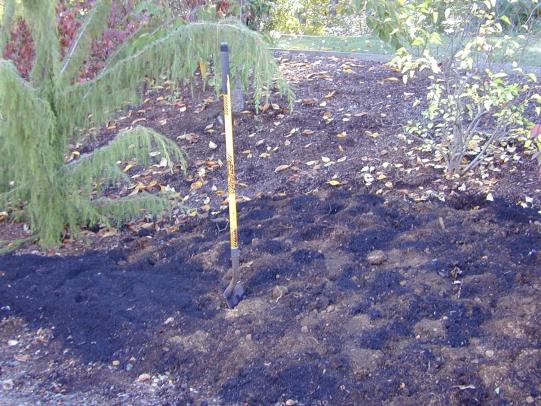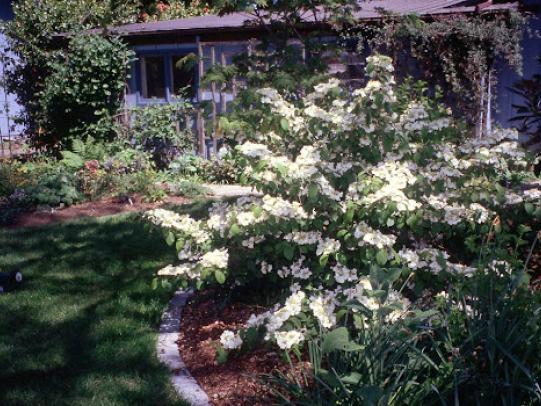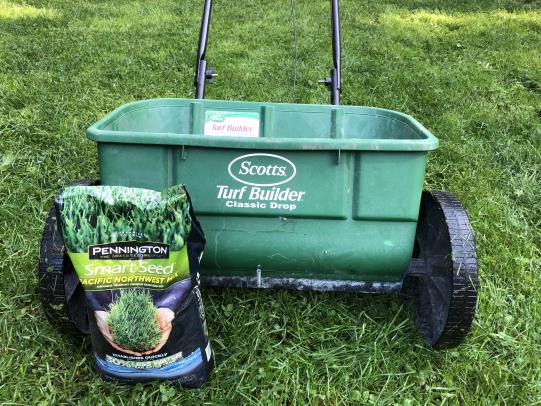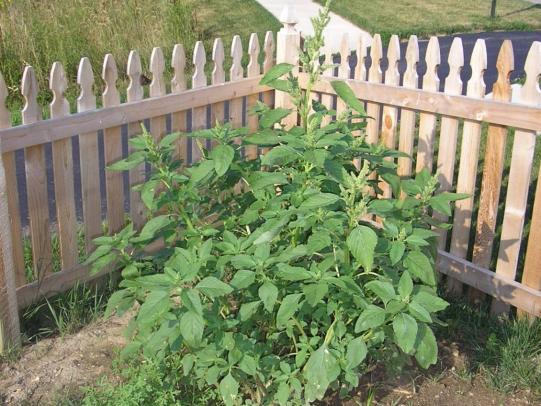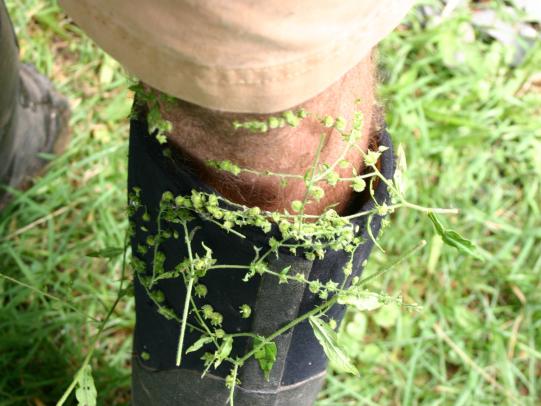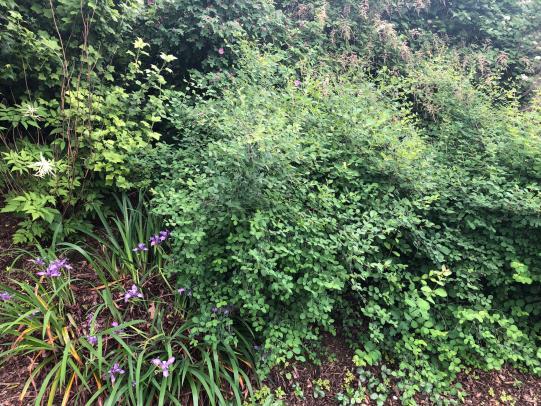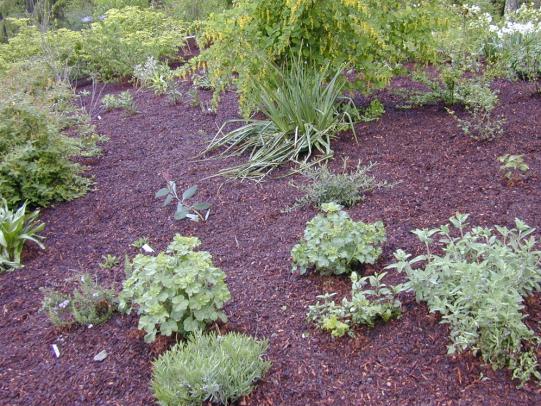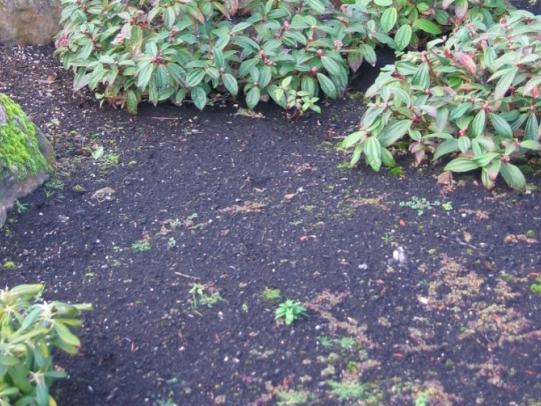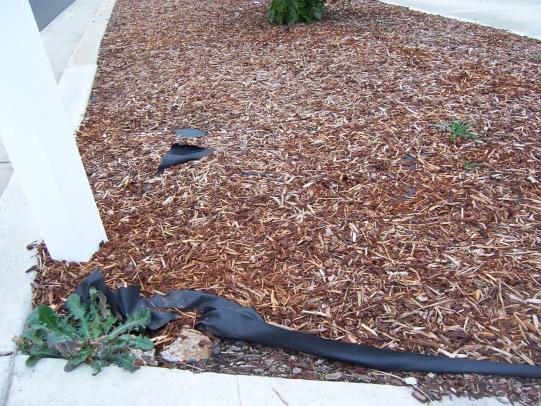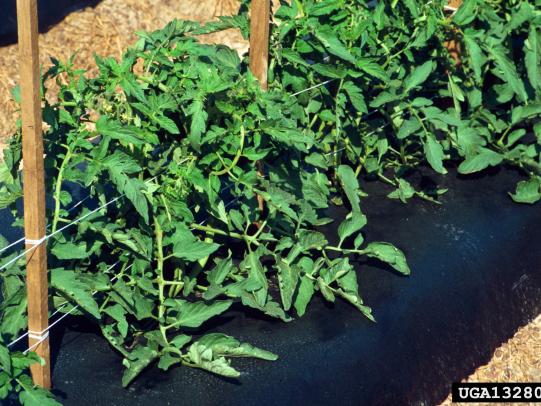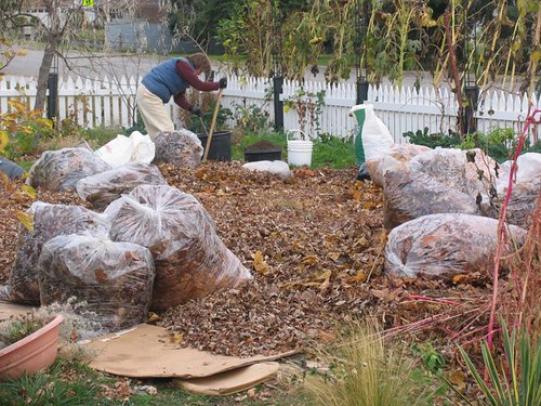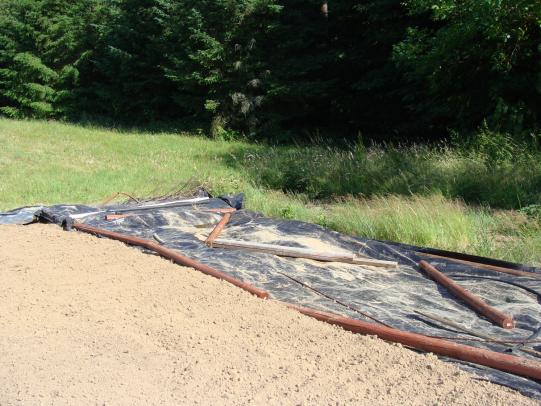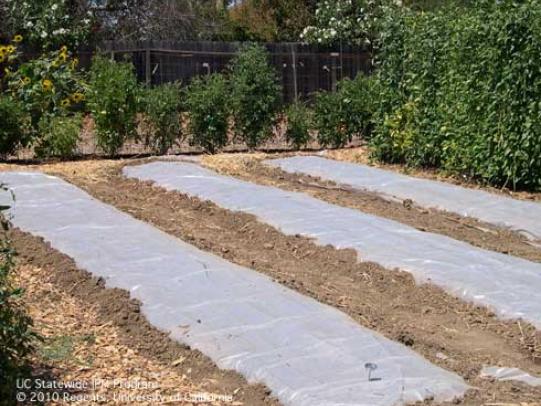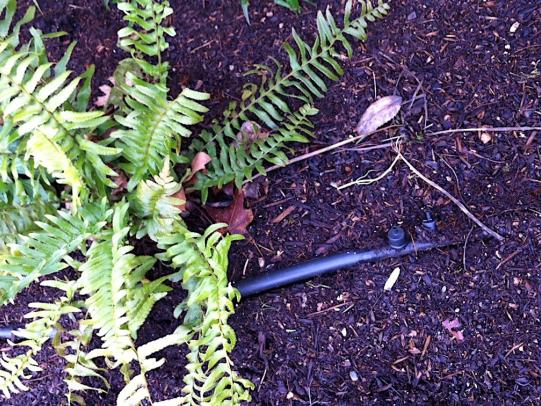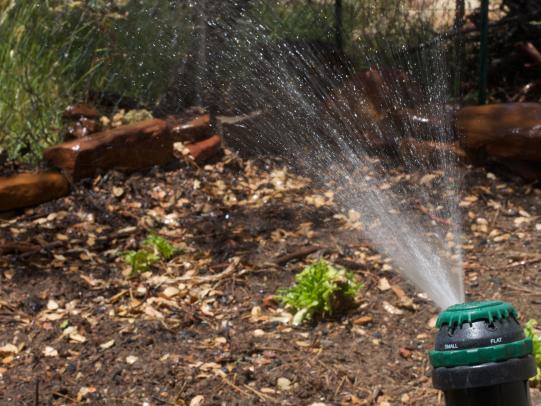Take a Year-round Approach Using Many Methods
Many people want to manage their garden and landscape without weed killers (herbicides). Herbicides are chemical products designed to kill unwanted plants.
Non-chemical weed control tips
- Weed management in landscapes and lawns requires a year-round, integrated approach using many methods.
- These methods work best when used in combination with each other or in addition to chemical weed-control methods.
- Evaluate your tolerance for weeds. Strive to use non-chemical control methods first.
JUMP TO
Keys for Success
- Know how different kinds of weeds grow (life cycle). This information helps you determine the correct methods and timing for control.
- Be realistic about weed control. Consider your expectations for your lawn, garden, and landscape. Match them with the time and effort you are willing to put toward weed control. Evaluate your tolerance for various weeds in different parts of your space.
- Remove established weeds before planting. When possible, get them out with the root attached.
- Plan your site with weed control in mind. Prevent weeds from establishing. Grow a thick lawn without bare spots. Use dense plantings and/or mulch to cover soil in landscape areas.
- Remove new weeds quickly as they grow. Look for new weeds every 1–2 weeks. Remove them when the plant is small, before they are difficult to dig out.
- Preventing weeds from going to seed reduces future problems.
You often don’t need to know the species name or exact identity of various weeds growing in your garden and landscape to control them.
However, if you understand the life cycle of unwanted plants, you can determine the correct control timing and method.
Weed life cycles (how they grow) include:
- Annual
- Biennial
- Perennial
ANNUAL WEEDS
- Annual plants germinate from seed, grow, and set seed over the course of one year or less.
- They often germinate in bare soil, exposed to sunlight, but also other areas.
- For landscape areas, use mulch to prevent annuals from germinating.
- Control annual weeds before seed matures to prevent future problems.
- If you remove annual plants by the roots or cut them off just below the root crown (base of plant), they won’t grow back.
Other common cool season annual weeds include:
- Bittercress (Cardamine oligosperma)
- Chickweed (Stellaria media)
- Dead nettle (Lamium purpureum)
- Annual bluegrass (Poa annua)
Other common warm season annual weeds include:
- Pigweed (Amaranthus retroflexus)
- Lambsquarters (Chenopodium album)
- Mallow (Malva neglecta)
BIENNIAL WEEDS
- Biennial plants complete their life cycle over two years.
- During the first year, they germinate and grow as a rosette (low-growing plant). Rosettes are visible from the time of germination, through the winter, and into the spring.
- In the second year they grow non-woody stems, flowers, and seeds. Many weedy biennials will survive more than two years under the varying conditions or if inadequate weed control is applied.
- Dig out plants before they set seed and keep them from spreading.
PERENNIAL WEEDS
- Perennial plants live two years or more. Perennial weeds include herbaceous plants and woody plants.
- The best method to control perennial plants is to prevent them from establishing in the first place.
- Established perennials are difficult to control. They often require several years of effort to get rid of them.
HERBACEOUS PERENNIALS
- Herbaceous perennial weeds include dandelion, bindweed, Canada thistle, dock, and many others.
- Watch for these weeds on your site and take action before they establish.
- Dig out established plants by the roots. For example, you can remove most or all of the roots of dandelion and similar plants.
- Many herbaceous perennial plants spread with underground roots. Remove as much of the root system as possible.
- For situations where you can’t remove the roots of herbaceous perennial plants, focus on cutting the stems to remove leaves. The goal is to decrease the plant’s ability to perform photosynthesis. Over time, this process depletes the plants of carbohydrate reserves.
Perennial Grasses
- Consider physically removing them by the root to keep them from growing back.
- Perennial grasses are difficult to control, especially without herbicides.
PERENNIAL VINES, SHRUBS / Bushes & TREES
- Perennial vines, shrubs, and trees include tough weeds such as Himalayan blackberry, broom, tree-of-heaven, and many others.
- Consider physically removing them by the root to keep them from growing back.
- Woody perennial weeds are difficult to control, especially without herbicides.
- Monitor where you remove perennial weeds for regrowth. Dig out plants as they regrow.
- Controlling woody perennial weeds in the Pacific Northwest has a significant economic impact on public and private landowners.
INVASIVE PLANTS
- Invasive species are defined as non-native species that spread aggressively and alter the environment. There are many invasive plant species in the Pacific Northwest.
- Controlling invasive plants requires specialized knowledge and methods specific to each individual species.
How to identify and control invasive plants and common weeds:
- See Weeds for more information on how to identify and control invasive plants and common weeds.
- Find specific control methods for each weed species.
WEEDING WITH HAND TOOLS
- Dig out the roots of individual weeds.
- Weed manually through the growing season every week.
- Remove pulled weeds from your worksite.
- Weeds left on the soil may re-root if the soil is moist.
- For some weeds such as pigweed, if you remove the ones that have already flowered and begun to develop seeds, the seeds can continue to mature after the plant is pulled.
- Put pulled weeds in the green waste recycling stream. You can also compost pulled weeds onsite.
CULTIVATING
- Preparing soil for planting (tillage) brings weed seeds to the surface and stimulates germination.
- Expect many new weeds to germinate after you cultivate soil in your garden or landscape.
- Kill young weeds 1–3 weeks after you disturb the soil surface.
- Weeding activities also bring new weed seeds to the soil surface. Look for newly germinated weeds 1–3 weeks after weeding activities. Control them as needed.
FLAME WEEDING
- Flame weeding uses a backpack or dolly-based propane tank and torch. This tool effectively kills seedlings and low-growing plants.
- This is most effective on smaller weeds.
- Sites with significant annual weed infestations require flame weeding several times per year to keep plants from flowering and setting seed.
- Check with your local fire department to make sure you can use a flame weeder in your area. Also, keep a hose or bucket of water nearby.
- Use caution to keep from starting a wildfire if you choose to use a propane torch for weeding.
DIG OUT ESTABLISHED PLANTS
MOWING PERENNIAL PLANTS
Cutting back plants is an effective way to reduce their canopy so the root crowns and rhizomes can be located and dug out or treated with herbicides.
CULTIVATION, MOWING & REMOVING PLANTS WITH HEAVY EQUIPMENT
TARGETED GRAZING
Grazing animals are used by ranchers and land managers to reduce the growth of weeds such as blackberry, yellow starthistle, knotweeds, and others.
- Grazing is an effective way to reduce plant canopy so the root crowns and rhizomes can be located and dug out or treated with herbicides.
- Grazing animals will eat desirable vegetation as well as the targeted weed.
SITE PLANNING TO PREVENT WEEDS
- Establish a clean site by controlling perennial weeds before planting.
- Plan landscapes to prevent weeds from entering or spreading.
- Use the methods detailed below to prevent weeds in the first place.
USE HIGH-DENSITY PLANTING
Many weeds need exposed soil and many hours of sunlight to germinate and grow. Growing dense plantings of desired plants prevents weeds from growing.
ORGANIC MULCHES
Use a thick layer of mulch (3–4 inches deep) to keep annual weeds from germinating. Most weed seeds need exposed soil and a lot of sunlight to grow. Mulch limits the light on the soil surface that weeds require for germination.
Get Wood Chips in the Portland metro area, Oregon.
In the Portland metro area in Oregon, CHIPDROP is a service to get free wood chips delivered to your house, school, or community garden.
INORGANIC MULCHES
Inorganic mulches provide a physical barrier that limits weed growth.
OTHER MULCHING METHODS
Content provided by editor Weston Miller and writers Signe Danler and J. Jeremiah Mann.
Peer reviewed by OSU Department of Horticulture.
Non-Chemical Weed Management References
Weed Management in Landscapes
University of California IPM
Soil Solarization for Gardens and Landscapes
University of California IPM
Mulching Woody Ornamentals with Organic Materials
Oregon State University
Roll up your sleeves: Use multiple strategies to control invasive weeds
Oregon State University
Weed Control User Tool
University of California ANR
